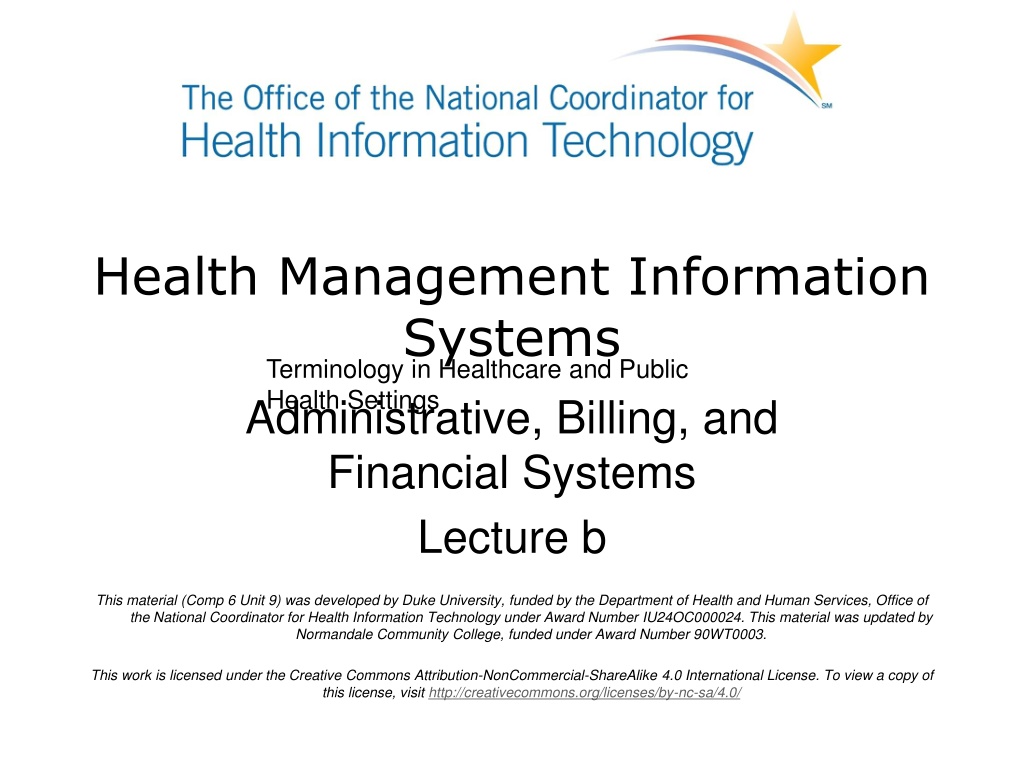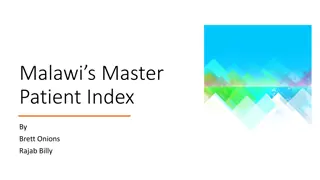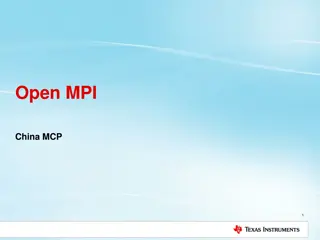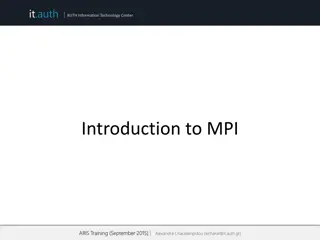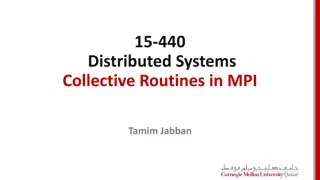Understanding Master Patient Index (MPI) in Healthcare Systems
Explore the significance of Master Patient Index (MPI) in healthcare settings, its role in patient management, patient identification, and linking electronic health records (EHRs). Learn about the purpose, functions, and benefits of MPI in ensuring accurate patient data and seamless healthcare operations.
- Healthcare
- Patient Management
- Electronic Health Records
- Master Patient Index
- Health Information Systems
Download Presentation

Please find below an Image/Link to download the presentation.
The content on the website is provided AS IS for your information and personal use only. It may not be sold, licensed, or shared on other websites without obtaining consent from the author. Download presentation by click this link. If you encounter any issues during the download, it is possible that the publisher has removed the file from their server.
E N D
Presentation Transcript
Health Management Information Systems Terminology in Healthcare and Public Health Settings Administrative, Billing, and Financial Systems Lecture b This material (Comp 6 Unit 9) was developed by Duke University, funded by the Department of Health and Human Services, Office of the National Coordinator for Health Information Technology under Award Number IU24OC000024. This material was updated by Normandale Community College, funded under Award Number 90WT0003. This work is licensed under the Creative Commons Attribution-NonCommercial-ShareAlike 4.0 International License. To view a copy of this license, visit http://creativecommons.org/licenses/by-nc-sa/4.0/
Administrative, Billing, and Financial Systems Learning Objectives 1. Discuss the core elements of a Master Patient Index (MPI) 2. Describe current trends to establish a Unique Patient Identifier (UPI) 2
Patient Management and Billing Systems that support the management of the patient Example o Patient identification Supporting technology o Master patient index 3
Master Patient Index (MPI) Centerpiece for all subsequent functionality and software applications Links to the patient health record Links to scheduling for appointments, reporting lab, x-ray, pharmacy, patient-related images 4
Master Patient Index (MPI) AHIMA definition A patient-identifying directory referencing all patients related to an organization and which also serves as a link to the patient record or information, facilitates patient identification, and assists in maintaining a longitudinal patient record from birth to death 5
Purpose of the MPI Provides the index, location of, and access to a patient s EHR in an enterprise Facilitates intraoperability and the accurate creation of a longitudinal record Ensures accurate and complete linking of EHRs for HIE 6
Purpose of the MPI Establishes a streamlined governance process Accurately matches persons being registered for care with their existing medical records 7
Core Elements of an MPI Internal patient identification Person name Date of birth Gender Race Ethnicity 8
Core Elements of a MPI Address Telephone number Alias/previous/maiden names Social security number Facility identification Universal patient identifier (UPI) Account/visit number 9
Core Elements of an MPI Admission/encounter/visit date Discharge or departure date Encounter/service type Encounter/service location Encounter primary physician Patient disposition 10
Unique Patient Identifier (UPI) Value permanently assigned to an individual for identification purposes Unique across the entire national health care system Not shared with any other individual 11
Functions a UPI Must Support Identification of an individual Identification of information Accurate identification functions Reduce health care operational cost and enhance the health status of the nation 12
Current Trends to Establish a UPI HIPAA Requires unique identification numbers o UPI has not been adopted ONC s Health Information Technology Standards Committee (HITSC) Patient Matching Power Team o Recommendations 13
Administrative, Billing, and Financial Systems Summary Applications that need to be integrated in health care information systems; Strategies used by health care organizations to ensure integration of functions; Critical elements needed to integrate billing, financial, and clinical systems; Core elements of a Master Patient Index (MPI) 14
Administrative, Billing, and Financial Systems References Lecture b References AHIMA. (2010a, September). Fundamentals for building a Master Patient Index/Enterprise Master Patient Index (Updated) Journal of AHIMA, 81(4), 52-57. Retrieved from http://library.ahima.org/xpedio/groups/public/documents/ahima/bok1_048389.hcsp?dDocName= bok1_048389 AHIMA. (2010b, September). Fundamentals for Building a Master Patient Index/Enterprise Master Patient Index (Updated): Appendix A Recommended core data elements for EMPIs. Journal of AHIMA, 81(4), 52-57. Retrieved from http://library.ahima.org/xpedio/groups/public/documents/ahima/bok1_048390.hcsp?dDocName= bok1_048390 American Health Information Management Association. (2012). Pocket glossary for health information management and technology (3rd ed.). Chicago, IL: Author. Healthcare Information and Management Systems Society (HIMSS). (2010). HIMSS dictionary of healthcare information technology terms, acronyms and organizations (2rd ed.). Chicago, IL: Author. Health Information Technology Standards Committee (HITSC). 2011. Patient matching power team recommendations. http://healthit.hhs.gov/portal/server.pt/gateway/PTARGS_0_12811_955311_0_0_18/08_17_11_P atient_Matching_PT_Recomm.pdf National Committee on Vital and Health Statistics. (1997). Part three: Unique patient identifier. Retrieved from http://ncvhs.hhs.gov/app3.htm#Part3 15
Administrative, Billing, and Financial Systems Lecture b This material was developed by Duke University, funded by the Department of Health and Human Services, Office of the National Coordinator for Health Information Technology under Award Number IU24OC000024. This material was updated by Normandale Community College, funded under Award Number 90WT0003. 16
